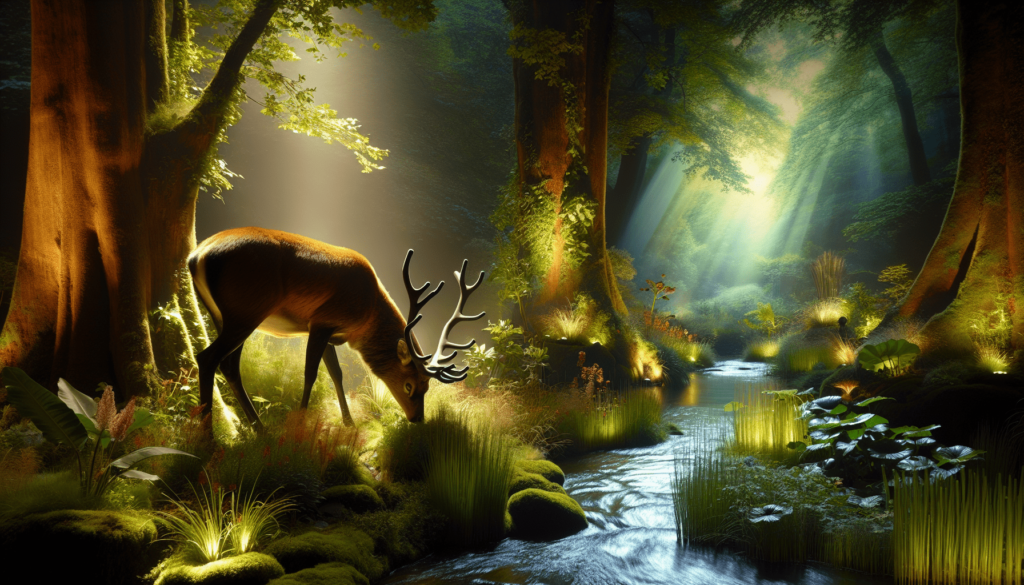
Have you ever stopped to consider how your actions, even in something as simple as feeding deer, can impact the environment and the delicate balance of local ecosystems? Deer feeding may seem like a friendly gesture, but it’s essential to approach it with a sense of responsibility and awareness of ethical practices. Let’s explore some conservation-focused strategies together that can ensure your deer feeding efforts are not only beneficial for the deer but also for the entire ecosystem.
Understanding the Importance of Ethical Deer Feeding
Feeding deer is often seen as an act of kindness, yet it carries a range of complex implications for wildlife and the environment. When done improperly, deer feeding can lead to various problems, including habitat degradation, disease transmission, and behavioral changes in deer populations. By understanding the importance of ethical practices, you can become a steward for wildlife rather than a contributor to potential issues.
The Role of Deer in the Ecosystem
Deer play a vital role in maintaining healthy ecosystems. They help control vegetation growth, which in turn supports other wildlife species. By grazing, they contribute to diverse plant life, which is essential for birds, insects, and even small mammals. When you feed deer responsibly, you can help enhance their role in the ecosystem instead of detracting from it.
Risks of Inappropriate Feeding
Feeding deer can inadvertently increase their vulnerability to diseases, as large congregations of animals can promote the spread of illnesses like chronic wasting disease (CWD). Overfeeding can also disrupt the natural foraging behavior of deer, leading to dependency on human-provided food sources.
Ethical Practices for Deer Feeding
The first step in ensuring your deer feeding initiative aligns with conservation efforts is to adopt ethical practices. Here are some essential guidelines to follow:
Use Natural Foods
Instead of processed foods or grains, consider providing natural foods that resemble what deer would seek out in their natural habitat. Apples, carrots, and other fresh fruits or vegetables can be great options. Be sure to avoid feeding them anything that could be harmful, like bread or junk food.
Avoid Overfeeding
It’s vital to monitor how much food you provide. Overfeeding can lead to dependency, and deer might gravitate to areas where food is always available, instead of foraging naturally. A good rule of thumb is to place small amounts of food, allowing the deer to consume it quickly and naturally.
Choose the Right Location
Placement is key when it comes to feeding deer. Select a secluded area away from roads, homes, or heavily trafficked spots to minimize stress on the animals. This not only provides a safer environment for the deer to feed but also helps reduce the likelihood of vehicle collisions.
Timing Matters
Be mindful of when you choose to feed. The best times are during severe weather conditions, like heavy snowfalls or extreme cold. During such times, deer may face difficulty in finding food. In more temperate conditions, let deer rely on their natural foraging instincts.
Respect Wildlife Laws and Regulations
Before initiating any feeding efforts, familiarize yourself with local wildlife laws and guidelines, as they can vary considerably from region to region. Many places have restrictions or specific permissions needed for deer feeding to help mitigate environmental impacts and promote responsible stewardship.

Educating Yourself on Deer Behavior
Understanding deer behavior is crucial to feeding them ethically. Do you know how deer communicate and interact with their environment?
Social Structures
Deer are social animals and often gather in groups. Understanding their social structures helps you anticipate their behavior during feeding times. Male deer might be more territorial, especially during mating season, which can impact how you approach feeding.
Seasonal Changes in Behavior
As seasons change, so do deer feeding habits. Knowing when deer are most active can inform your feeding schedule. For instance, during the rut (mating season), male deer are less likely to be interested in food as they focus on competition and attracting mates.
Tips for Sustainable Deer Feeding
Sustainability should be at the forefront of your deer feeding efforts. Here are some strategies to keep in mind.
Monitor Local Deer Population
Keep an eye on local deer populations and their health. If you notice a significant increase or decline in numbers, it might be time to reassess your feeding practices and determine whether your actions are contributing to healthier herd dynamics.
Collaborate with Local Wildlife Experts
Connecting with local wildlife biologists or conservation groups can provide valuable insights on best practices. They can help guide your feeding efforts based on the specific needs and conditions of your area.
Promote Native Plant Growth
Instead of solely relying on supplemental feeding, consider planting native plants that can naturally sustain deer populations. Native flora can also support other wildlife species, enriching the ecosystem as a whole.
Keep Track of Food Sources
If you start regular deer feeding, maintain a log of what you feed and how often. Monitoring this can help you identify trends and make necessary adjustments to your feeding practices.

Health Considerations for Deer
The health of deer is paramount to conservation-focused feeding. Understanding how your feeding practices impact their well-being can be enlightening.
Balancing Nutrition
Deer require a balanced diet that includes a mix of proteins, carbohydrates, fiber, vitamins, and minerals. While you may want to supplement their diet occasionally, it’s vital to ensure that these supplements do not upset their nutritional balance.
Disease Prevention
You have a role in preventing the spread of diseases among deer. Keeping feeding areas clean and avoiding congregations can help limit the risk of transmission of illnesses. If you notice sick deer, it’s best to consult local wildlife authorities for guidance.
Hydration Needs
In addition to feeding, remember that access to clean water is essential. If you’re in an area where natural water sources are scarce, consider placing water containers in a way that prevents overcrowding while encouraging deer to hydrate safely.
Connecting with Nature Through Deer Feeding
Feeding deer can create a profound connection to nature when done correctly. By adopting conservation-focused practices, you become an active participant in safeguarding local ecosystems.
Mindfulness in Observation
As you feed deer, take the time to observe their behaviors and interactions. This experience can deepen your appreciation for wildlife and the environment around you. Observing deer can reveal patterns and behaviors that make you more aware of their needs and the challenges they face.
Educating Others
Sharing your knowledge of ethical feeding practices with friends, family, or your community can amplify positive impacts on deer populations. The more people understand the significance of conservation-focused feeding, the bigger difference you can collectively make.
Final Thoughts on Ethical Deer Feeding
Ethical deer feeding requires responsibility, attention, and a deep respect for nature. By being well-informed and adopting ethical practices, you can ensure your actions support both deer and the broader ecosystem.
It’s your chance to engage in a meaningful connection with wildlife and actively participate in the conservation of the environment. Whether you are new to deer feeding or have been doing it for years, these thoughtful practices can create not just a feeding routine for deer but a beautiful relationship with nature that benefits all living beings in the ecosystem.
So, the next time you’re tempted to toss some corn out for the deer, pause and consider how you can make your efforts align more closely with conservation principles. You might find that it enhances the experience for you and the wildlife you cherish.





